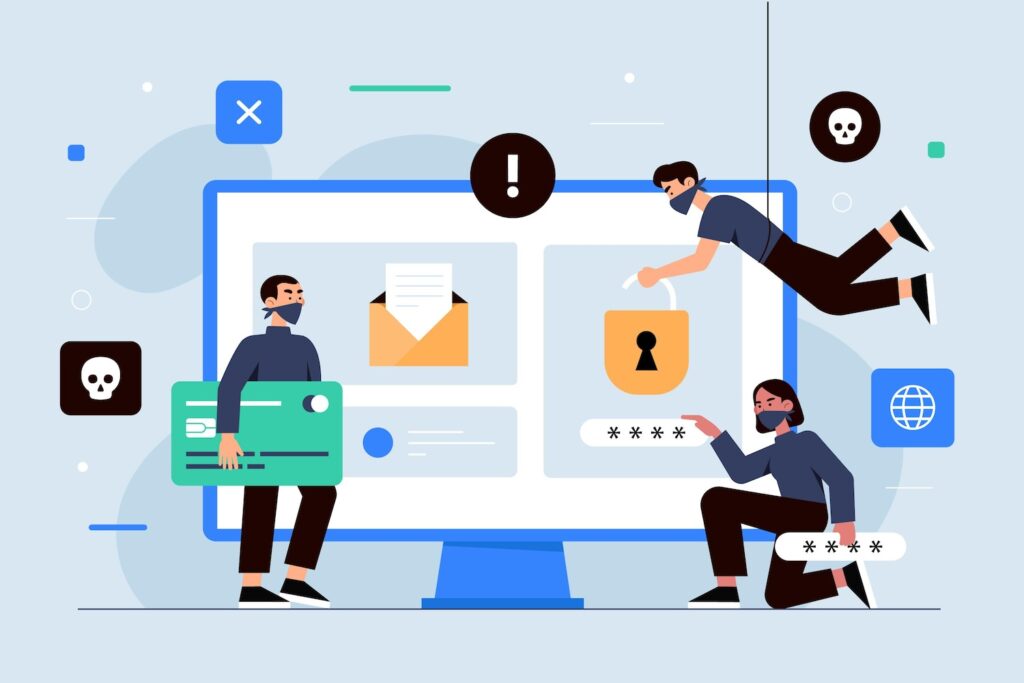Exploring the Top-Earning Opportunities: A Guide to the Highest Paid Programming Languages
Computer programmers build web properties, software, and mobile apps. These specialists use programming languages like Ruby, Javascript, and C to accomplish this goal.
If you’re an aspiring software developer, it can be difficult to know which one to master. After all, there are dozens of programming languages available. The good news is that many programming languages have significant earning potential.
In this guide, we’ll cover the in-demand programming languages to master in your career.
The Highest-Paying Programming Languages by Average Salary
If you’re looking to advance your career and earn a high salary, you should learn and master these popular languages to get started:
- Python: $141,658 /year
- Ruby: $134,186 /year
- C++: $120,212 /year
- Golang: $120,086 /year
- Java: $117,931 /year
- Rust: $109,905 /year
- SQL: $109,407 /year
- Swift: $103,072/year
*All salaries are the US national average and sourced from ZipRecruiter
These aren’t only some of the highest-paying programming languages in the world, but they’re also the most popular.
Whether you take an online course, boot camp, or attend a community college, you shouldn’t have trouble learning these open-source programming languages.
How to Increase Your Earning Potential: Best Practices for Computer Programmers
It’s not enough to learn the highest-paying programming languages. If you want to become a successful computer scientist, here are some tips.
Learn Different Programming Languages
There are dozens of programming languages in the world. Software development teams sometimes use several programming languages, artificial intelligence (AI), and machine learning to build dynamic mobile applications.
On top of that, building integrations through APIs and SDKs means learning how different programming languages relate.
To advance your career, you should invest time in learning different programming languages. This is especially true if you plan on working for Fortune 500 companies in the future.
For example, Swift is commonly used in the Apple coding ecosystem. If working for Apple as a programmer is one of your career goals, Swift should definitely be on your priority list.
Build Credibility
Another way to increase your earnings is by building credibility in your niche. There are several ways you can do this, including:
- Creating thought-leadership content: Do you have something new to share with other coders? If so, you can write for other websites and produce content showing your level of expertise.
- Freelancing: You can also elevate your credibility by offering your services for side projects. This can give you some extra cash in your pocket, introduce you to new people, and expand your connections.
- Contributing to open-source projects: Open-source projects require volunteer community members to stay afloat. If you contribute to developing new software, patches, desktop applications, web architecture, and updates, your work will last for a long time and even catch the eyes of prospective employers.
- Participating in hackathons: These events feature countless hackers and computer programmers from all walks of life. Think of it as a networking opportunity – like LinkedIn, but for computer programmers and enthusiasts only.
Following these strategies can help you get your name out there, find new job opportunities, and connect with like-minded people who can become connections later.
Continue Learning
The world of modern technology is always changing. The best computer programmers can stay on top of new developments and adapt their processes. There are many ways you can evolve your learning.
One way is by attending keynote speeches. Doing so lets you learn from some of the brightest minds in software testing. The good news is that these events are usually affordable and held in public places.
You can also meet other programmers and grow your network through public learning events. Another way you can continue your learning is by taking online boot camps.
These online courses teach beginner, intermediate, and advanced web development trends. Upon completing a boot camp, you’ll receive a certificate, which you can add to your resume.
Switch Companies
If you believe you’re stagnant in your current job, you should explore more opportunities. Software development is a continuously changing industry. The more ambitious you are as a computer programmer, the more likely you are to succeed over your peers.
You should work with a company that’ll challenge you to learn something new daily and contribute to a world-changing project.
Oh, and let’s not forget that you can see an average 15% salary increase when changing jobs.
Start Your Own Business
Embarking on the journey of starting your own programming business can be a transformative step towards significantly increasing your earning potential. Start by doing some research and reading up on small business blogs to gain insights on starting and running a business.
Unlike traditional employment, running your own business in the tech industry means there’s no ceiling on how much you can earn. The more innovative and efficient your solutions are, the greater the demand and, consequently, the higher your potential income.
Need inspiration? Ryan Hogue earned $85,000 a year as a full-time web developer. Now, he makes $14,600 a month in passive income. That’s an impressive jump. Talk about inspiring.
However, an often overlooked but critical aspect of this process is the importance of registering your business with state authorities. This legal step is essential to avoid unnecessary fees or, worse, being denied the right to operate.
By ensuring your business is registered and compliant with state and local regulations, you protect your venture and establish a foundation of credibility and trustworthiness in the market.
Final Words
Learning these popular programming languages can increase your earning potential and advance your career.
It’s not uncommon for successful computer programmers to earn well over $100,000 a year or more in today’s digital world. Developer salaries are well above the median salary and some of the highest-paying jobs.
If you’re ready to expand your horizons and learn some new programming languages, studying the ones in this guide is a great first step.
These languages are great for beginners because they’re often simple and easy to learn and have a wide range of applications.
You can use them for everything from web development to game design to software engineering. They’re constantly evolving, so new learning opportunities are always there across tech companies (or starting your own).
Here’s to your success as a software engineer or skilled developer!
Featured Image by Kenny Eliason on Unsplash
The post Exploring the Top-Earning Opportunities: A Guide to the Highest Paid Programming Languages appeared first on noupe.




















